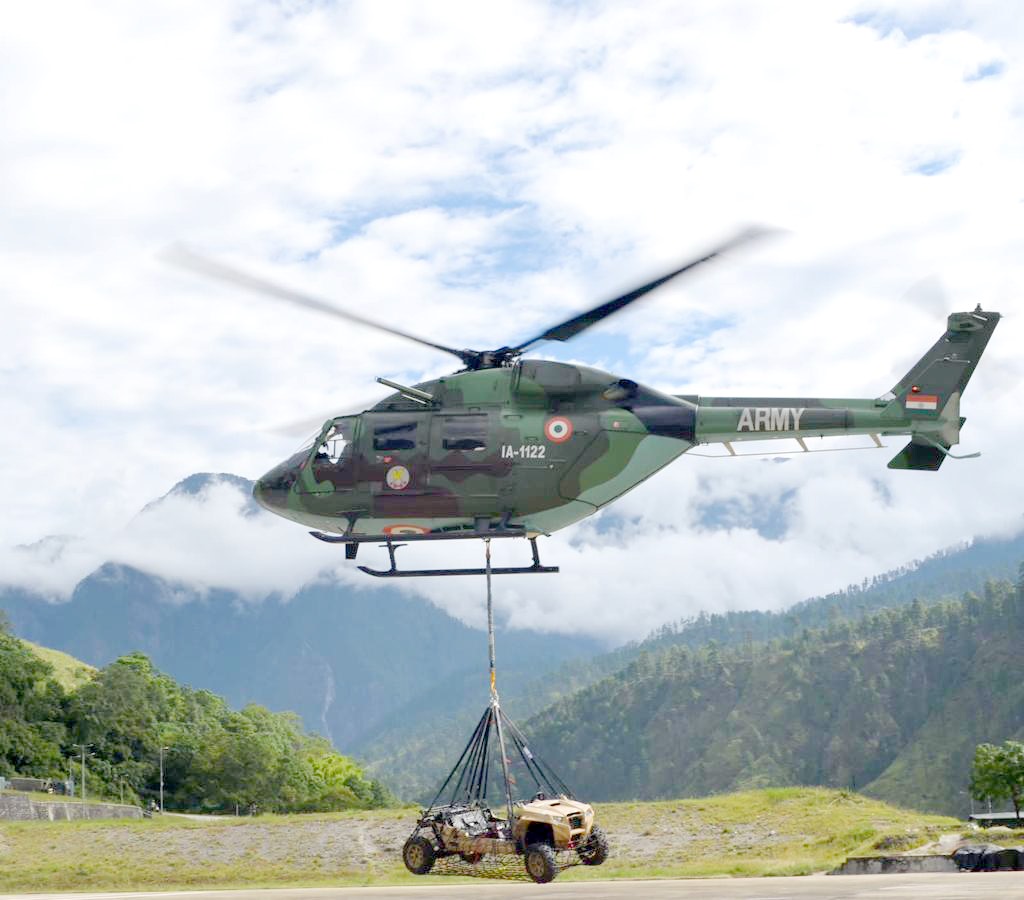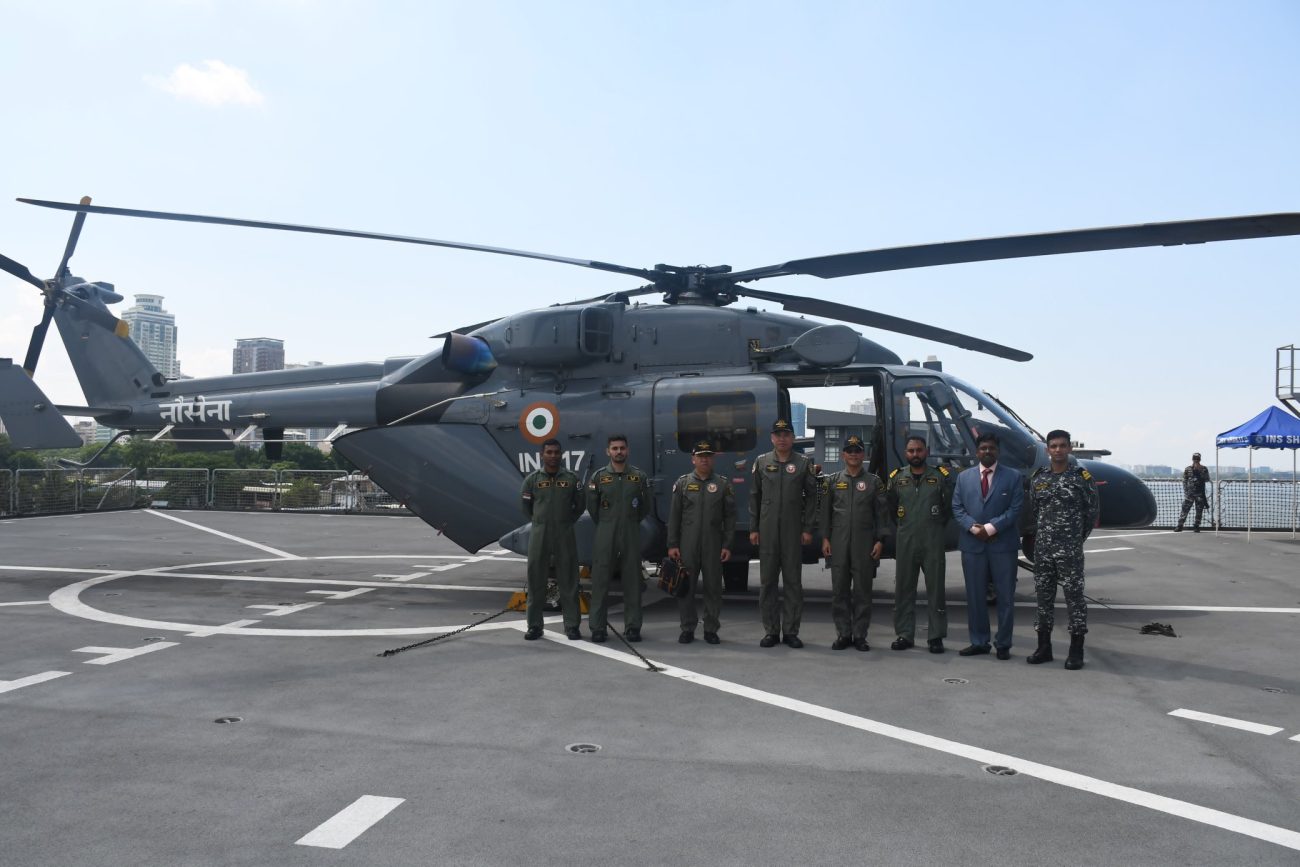This Aero India 2025, which consisted predominantly of Indian military aircraft, has one major missing – the Advanced Light Helicopter (ALH).
On earlier occasions, the ALH aerobatics team Sarang has been the highlight of the airshows in India. However, following the crash in January, the entire fleet of 330 ALHs has been grounded.
Experts have raised questions over the reliability of the helicopter that is operated by all three services. However, the Chief of Indian aerospace maker Hindustan Aeronautics Limited (HAL) has asserted that there is no design flaw in the aircraft, and it has been duly checked by NLR-Netherlands Aerospace Centre.
He said that it is the training and maintenance that needs to be changed.
HAL Chief Dr DK Sunil said at the press conference on the sidelines of Aero India, “There is no problem with the design. NLR lab in the Netherlands has reviewed it and certified it.” He underscored that the helicopter has flown over 4.5 lakh hours since its induction in 2004.
He highlighted that the ALH Dhruv has experienced a total of 28 crashes since its induction. And, these incidents have been attributed to various causes. Thirteen crashes were due to technical faults, another 13 crashes were attributed to human error, and the remaining two crashes had unknown causes.
A “Hybrid” Of Abrams & Bradley, U.S. Army’s M10 Booker Moves Closer To Deployment With Yuma Testing
In the latest incident, an Advanced Light Helicopter (ALH) belonging to the Indian Coast Guard (ICG) crashed in Porbandar, Gujarat, on January 5.
The crash resulted in the death of three crew members onboard the aircraft, including two pilots and an aircrew diver. The chopper was returning from a routine training sortie when it crashed while trying to land on the Porbandar airport runway.
The crash was the third incident to occur in over four months, once again raising questions over the safety and efficacy of this indigenously developed chopper.
Speaking on the crash, Dr. Sunil added: “The preliminary investigation suggested that the crash was caused due to a fracture in the swash plate of the helicopter. However, the Defect Investigation Team is conducting a detailed probe into the reasons for the crash. It is expected to submit its report in three weeks, following which we will take a call on resuming operations of the ALH.”
The HAL Chief said that training and maintenance could largely be responsible for the technical faults. “However, we are working with the Indian Coast Guard to examine their maintenance practices and determine whether any changes are required.”
Developed by the state-owned Hindustan Aeronautics Limited (HAL), the ALH Dhruv is a twin-engine, multi-role, multi-mission new-generation helicopter in the 5.5-tonne weight class. By January 2024, 400 ALH helicopters had been produced.
Earlier in September 2024, an ALH Dhruv belonging to the ICG ditched at sea off the Gujarat coast as it approached an Indian-flagged motor tanker, Hari Leela, about 45 kilometers from Porbandar, killing its two pilots.
Less than a month later, in October 2024, another ALH Dhruv (of the Indian Air Force) had to make an emergency landing while on a flood relief operation due to a technical snag. This particular chopper was deployed for flood relief operations in Bihar.

Accidents Involving Indigenous Rotary Wing Helos
In 2023, the entire fleet of around 330 twin-engine ALHs in the armed forces had to be grounded a few times after four major accidents. The Indian Army accounts for the most – 96 ALHs and 75 armed versions called Rudra. The air force operates around 70 ALHs. The rest are operated by the Navy and the Coast Guard.
The two pilots of the Indian Army were killed in a crash of ALH in Jammu and Kashmir on May 4, 2023. The Indian Army grounded its fleet of 170 ALHs and undertook a comprehensive safety check. The pilots had reported a “loss of power.”
This was the third time that checks have been ordered since October 2022. An Indian Army aviation ALH MK IV variant helicopter had crashed near Migging in Arunachal Pradesh in October, killing all five on board.
In March 2023, the Army, the Indian Air Force, and the Navy grounded their respective ALH fleets and carried out checks. This was after a Navy ALH had to ditch — land the copter on the water — due to “loss of power.”
Specialist teams of HAL did an elaborate safety check on the helicopters and found issues related to control rod failure (affecting power input to rotor blades) and hydraulics issues. The control rod is essential for transferring power from the copter’s two engines to its overhead rotors.
The main functions of the control rod in a helicopter gearbox are to transmit the pilot’s control inputs to the main rotor and tail rotor systems, allow the pilot to control the pitch of the main rotor and tail rotor, and enable the pilot to move the helicopter in the desired direction. It is a critical component of the helicopter’s flight control system.
The control rod in ALH is made of aluminum, and HAL decided to replace it with steel control rods in some helicopters.
Special checks have been put in place for the rod every 100 hours of flying instead of an examination every 300 hours. This will increase the copter’s fatigue tolerance and improve the pilot’s control of the aircraft. A regulatory panel suggested the change.

Export Orders For ALH
The indigenous helicopter was first exported to Ecuador, and after a series of crashes, Ecuador grounded its fleet of ALHs, causing a diplomatic fiasco.
Ecuador grounded its fleet of Indian-made helicopters and put them up for sale. The country also unilaterally canceled its order for more ALHs from India, which sued the Ecuadorian government over the matter.
Dhruv’s debacle with Ecuador has long haunted it, but its MK III variant has evoked significant interest from various countries looking for cost-effective alternatives to Western military helicopters. The Philippines, Argentina, and North African countries have shown interest in the helicopter.
The ALH MK III features numerous enhancements compared to the initial ALH model. The ALH MK III’s primary modification is its Shakti engine, which was created as part of a joint venture between HAL and French engine manufacturer Safran. It features an electro-optical payload, a night vision device, and an advanced maritime patrol radar, all housed in a glass cockpit.
The MK III version has a new electronic warfare (EW) suite, warning systems, automatic chaff and flare dispensers, and an improved vibration control system.
The ALH has been sold to Maldives, Mauritius, Nepal, and Ecuador for military use. One of these choppers has been leased to the Israel Defense Forces (IDF). Additionally, states like Turkey and Peru purchased the helicopter for civilian purposes.
The MK IV variant is the armed version of the ALH called ‘Rudra.’ It is designed for attack, close air support, and high-altitude operations.
In September 2023, an Argentinian team was in India for the trials of the helicopter’s MK III and MK IV variants. The team visited HAL Bengaluru and flew both ALH MKIII and MK IV. It was not a customer demonstration but a trial by the Argentinian pilots. Argentina has been looking at ordering 20 of these units.
In 2023, during the first-ever visit of a Filipino Coast Guard chief to India, he conducted a Customer Demonstration Flight onboard ALH MK III at Goa. The Philippines is likely to buy seven helicopters from India.
It remains to be seen if the change in maintenance and training procedures can assuage the concerns of the Indian forces operating the helicopter.




